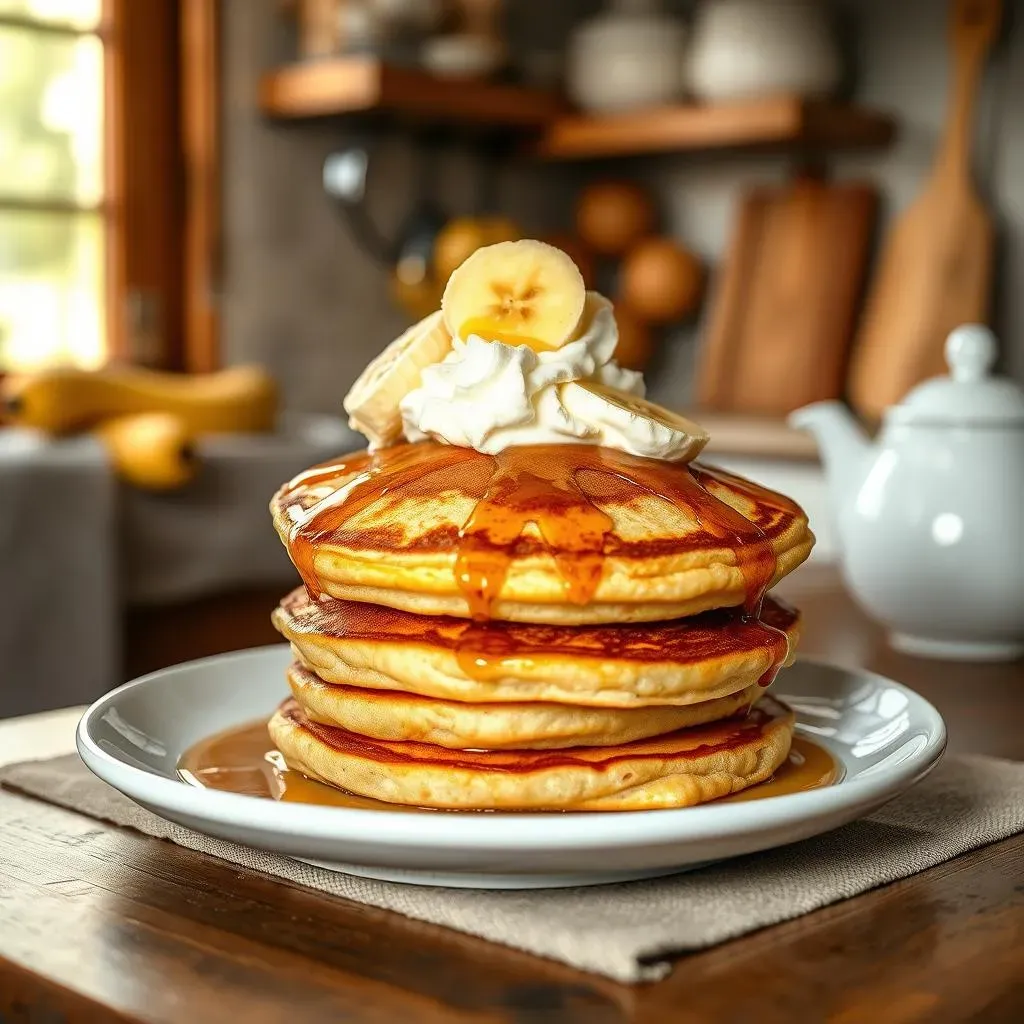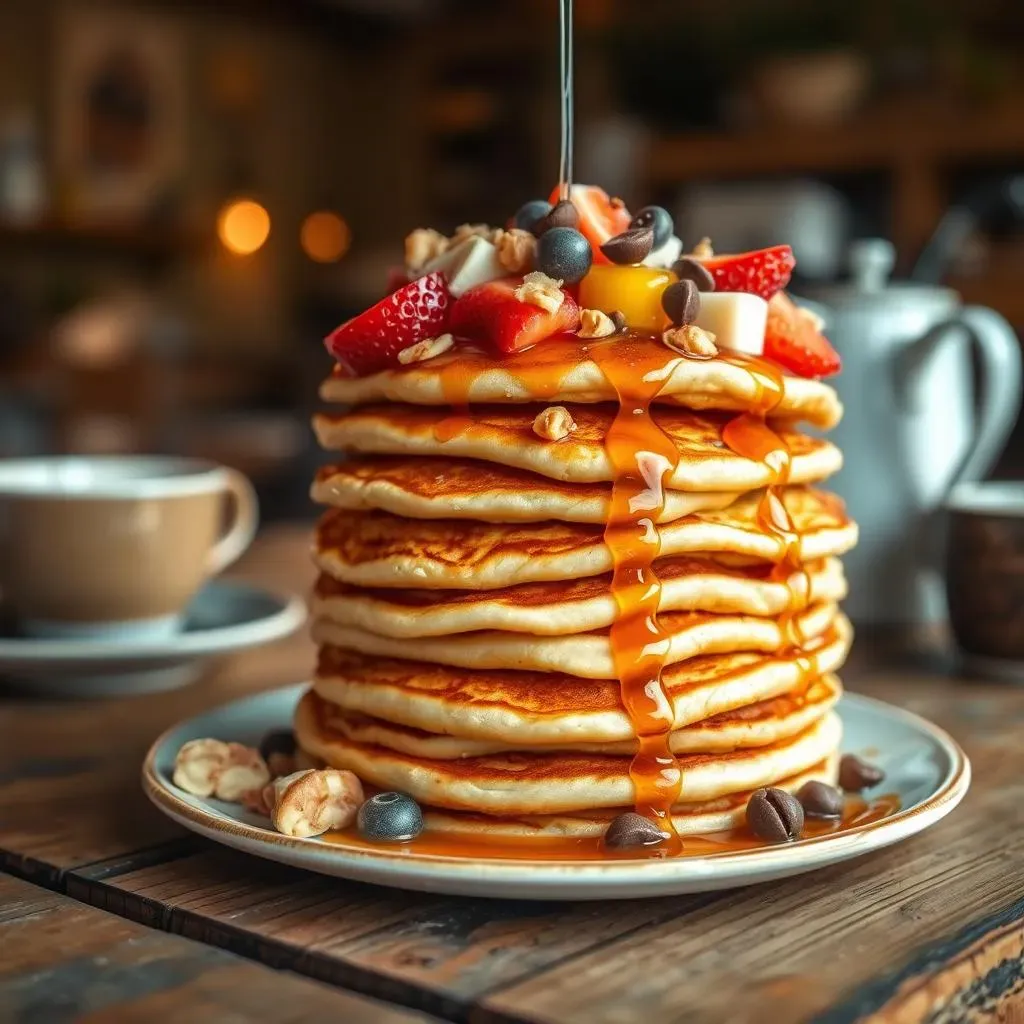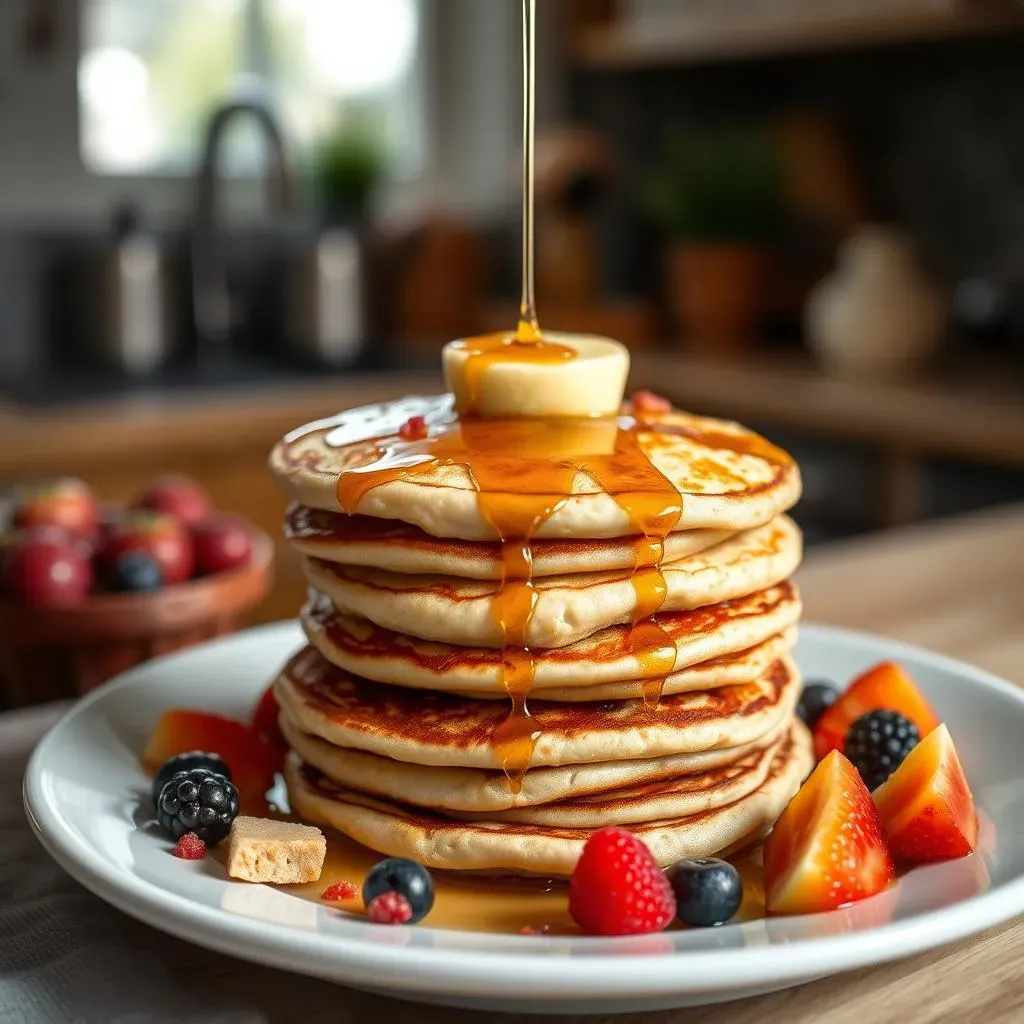Table of Contents
Are you craving fluffy, delicious pancakes but need to avoid gluten? Do you have a bunch of overripe bananas begging to be used? Then you've come to the right place! This article is your ultimate guide to making perfect gluten-free banana pancakes. We'll walk you through everything from mastering the batter – including tips and tricks for the best texture – to exploring exciting variations and flavor combinations that go beyond the basic recipe. We'll even tackle those pesky gluten-free pancake problems that can sometimes leave you with gummy disappointments. Get ready to discover the secrets to light, fluffy, and incredibly flavorful gluten-free banana pancakes, transforming your breakfast (or any meal!) into a delightful experience. This isn't just a recipe; it's a journey to pancake perfection! So grab your mixing bowls and let's get started with our foolproof gluten free pancake recipe banana.
Mastering the GlutenFree Banana Pancake Batter: Tips and Tricks

Mastering the GlutenFree Banana Pancake Batter: Tips and Tricks
The Power of Ripe Bananas
The secret to incredibly moist and flavorful gluten-free banana pancakes lies in the bananas themselves! Use very ripe, even slightly overripe, bananas. The extra sweetness and moisture they provide are key to achieving that perfect texture. Think of those speckled, almost brown bananas as gold – they’re the foundation of your pancake perfection. Don't be afraid to mash them really well; the smoother the banana puree, the smoother your batter will be. For extra banana flavor, consider using a gluten-free banana pancake recipe specifically designed to highlight the banana's natural sweetness.
Remember, we're aiming for a batter that's not too thick, not too thin – just right! Think of the consistency of thick cream or yogurt. If it's too thick, add a splash more milk (dairy or non-dairy, depending on your preference). If it's too thin, add a tablespoon or two of extra gluten-free flour. A little experimentation is part of the fun! And don't forget to let the batter rest for about 5-10 minutes before cooking. This allows the gluten-free flour to absorb the liquid, resulting in fluffier pancakes. Check out our tips for making perfect gluten-free pancakes for more advice.
Banana Ripeness | Pancake Result |
|---|---|
Slightly Underripe | Dry, less sweet pancakes |
Perfectly Ripe | Moist, well-balanced flavor |
Overripe | Very moist, intensely sweet pancakes |
Flour Power: Choosing the Right Gluten-Free Blend
Not all gluten-free flours are created equal. When it comes to pancakes, you want a blend that offers a good balance of structure and fluffiness. Many cooks swear by a 1:1 gluten-free all-purpose flour blend, but you might need to experiment to find your favorite. Some blends might require a bit more liquid than others, so don't be afraid to adjust the recipe accordingly. If you're using almond flour, coconut flour, or oat flour, you'll likely need to modify the recipe; these flours absorb liquid differently than all-purpose blends. For instance, if you're using almond flour, check out our gluten-free almond flour pancake recipe for specific instructions.
Adding a little xanthan gum or another binding agent can help improve the texture and prevent your pancakes from falling apart. Start with a small amount (about 1/2 teaspoon per cup of flour) and adjust to your liking. Too much can make the pancakes gummy, while too little might leave them a little crumbly. Don't be afraid to try different gluten-free flour blends to discover which one creates the best texture for your taste. If you're looking for a mix that works well, check our guide on the best gluten-free pancake mix options available.
- 1:1 Gluten-Free All-Purpose Blend
- Almond Flour (requires recipe adjustment)
- Coconut Flour (requires recipe adjustment)
- Oat Flour (requires recipe adjustment)
Beyond the Basics: Delicious Variations and Flavor Combinations

Beyond the Basics: Delicious Variations and Flavor Combinations
Spicing Things Up: Adding Flavor to Your Pancakes
Let's move beyond plain pancakes! Think of your basic gluten-free banana pancake recipe as a blank canvas. A dash of cinnamon adds warmth, while a pinch of nutmeg brings a subtle earthiness. For a zesty kick, try adding a teaspoon of lemon zest or a sprinkle of cardamom. Feeling adventurous? A few chopped walnuts or pecans add a delightful crunch. And don't forget the chocolate chips! Seriously, who doesn't love chocolate chip pancakes? For more ideas on adding exciting flavors, check out our gluten-free pancake toppings guide.
Don't be afraid to experiment with different extracts, too! A few drops of vanilla extract enhance the sweetness, while almond extract adds a sophisticated nutty note. Even a tiny bit of peppermint extract can create a surprisingly refreshing twist, especially during the colder months. Remember, the best part of cooking is finding what you enjoy most. Why not try something new? You might just discover your new favorite pancake flavor!
- Cinnamon
- Nutmeg
- Lemon Zest
- Cardamom
- Walnuts/Pecans
- Chocolate Chips
Fruity Fun: Incorporating Fresh and Frozen Fruits
Fruit and pancakes are a match made in heaven, especially when you're working with bananas already! Toss in some blueberries for a burst of juicy sweetness, or add some chopped strawberries for a vibrant pop of color and tangy flavor. Frozen fruits work perfectly too – just make sure to let them thaw slightly before adding them to the batter. This prevents the batter from becoming too watery.
Consider adding a handful of raspberries or sliced peaches for a more sophisticated pancake. The possibilities are endless! You can even make a seasonal pancake, using whatever fruits are in season. For example, during the summer months, try adding some sliced mangoes or pineapple for a tropical twist. Or, for a more autumnal feel, consider adding some chopped apples or cranberries. For more recipe ideas, check out this gluten-free pancake recipe for kids that is also great for adults!
Fruit Type | Flavor Profile |
|---|---|
Blueberries | Sweet and tart |
Strawberries | Sweet and tangy |
Raspberries | Tart and slightly sweet |
Peaches | Sweet and juicy |
Sweet and Savory: Exploring Unexpected Combinations
Who says pancakes have to be sweet? Think outside the box and try a savory twist! Add some chopped chives or bacon bits for a savory pancake that's perfect for brunch. Imagine the combination of salty bacon and sweet banana; it's a delightful surprise!
Another interesting option is to add some shredded cheese to the batter. Cheddar, parmesan, or even a Mexican blend can create a unique savory pancake. Serve with a side of salsa or sour cream for an extra kick. If you're feeling particularly adventurous, try adding some cooked sausage or crumbled chorizo to the batter for a hearty and flavorful pancake. For more ideas on how to make your pancakes interesting, check out our recipe on gluten-free pancakes vs regular pancakes.
"The only limit is your imagination!" - Anonymous Pancake Enthusiast
Troubleshooting Common GlutenFree Pancake Problems

Troubleshooting Common GlutenFree Pancake Problems
Why Are My Pancakes Gummy?
Ah, the gummy gluten-free pancake – a culinary tragedy we've all experienced! This usually happens because your gluten-free flour blend has absorbed too much liquid. Next time, try reducing the amount of milk or other liquids slightly. You can also ensure your gluten-free flour blend is fresh. Old flour can sometimes absorb more liquid, leading to gummy pancakes. Remember that different gluten-free flour blends behave differently. If you're using a new blend, you might need to experiment with the liquid ratios a bit. For more detailed guidance, check out our article on why are my gluten-free pancakes gummy?
Another culprit is overmixing the batter. Gentle mixing is key! Overmixing develops the gluten (even in gluten-free flour) and can make the pancakes tough and gummy. Mix just until the ingredients are combined—a few lumps are okay! Let the batter rest for at least 5-10 minutes before cooking. This allows the flour to hydrate properly and prevents gummy pancakes. Finally, ensure your cooking temperature is correct. Too high of a heat can cause the outside to burn before the inside is cooked through, resulting in a gummy texture.
- Reduce liquid slightly
- Use fresh flour
- Mix gently
- Let batter rest
- Adjust cooking temperature
My Pancakes Are Falling Apart!
Fragile pancakes are a common issue with gluten-free baking. The lack of gluten, which provides structure in regular flour, means your pancakes need a little extra help staying together. The solution? Make sure you're using a high-quality gluten-free flour blend designed for baking. Many blends contain xanthan gum or another binding agent, which helps hold the pancakes together. If your blend doesn't already contain a binder, consider adding a small amount (1/2 teaspoon per cup of flour) to your batter. Don't overdo it, though, as too much binder can lead to gummy pancakes!
Another tip is to avoid overmixing the batter. Gentle mixing is key to preventing tough, crumbly pancakes. Let the batter rest for at least 5-10 minutes before cooking; this allows the flour to properly absorb the liquid, which helps with structure. And finally, ensure you're not cooking the pancakes over too high heat. Gentle cooking prevents the outsides from burning before the insides are cooked through, making them less likely to fall apart. For a recipe that avoids this problem, you might want to check out our easy gluten-free pancake recipe.
Problem | Solution |
|---|---|
Falling Apart Pancakes | Use a good gluten-free blend, add binder, mix gently, rest batter |
Gummy Pancakes | Reduce liquid, use fresh flour, mix gently, adjust cooking temp |
My Pancakes Are Too Dry!
Dry gluten-free pancakes are often the result of using underripe bananas or not enough liquid in the batter. Make sure your bananas are very ripe, even slightly overripe. The extra moisture they provide is essential for moist pancakes. If your bananas are still on the firm side, try adding a tablespoon or two of milk or another liquid to your batter. You can also add a touch of applesauce or yogurt for extra moisture.
Another reason for dry pancakes is overbaking. Keep a close eye on your pancakes while they're cooking. Once bubbles start to form on the surface and the edges look set, it's time to flip them. Cook until golden brown on both sides. If your pancakes are still dry after adjusting these factors, consider using a different gluten-free flour blend. Some blends are naturally drier than others. For more help with this, check out our guide on common gluten-free pancake mistakes to avoid.
"Practice makes perfect!" - Your Friendly Neighborhood Baker